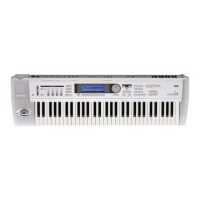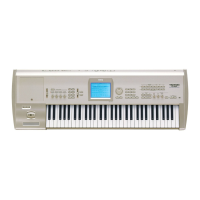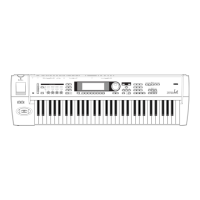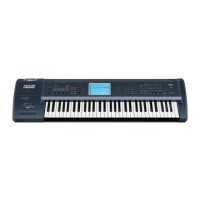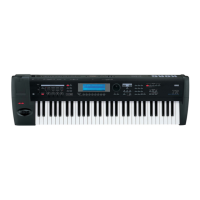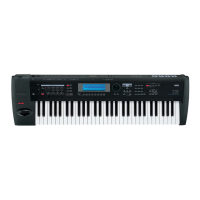8. Disk mode
54
Removing a floppy disk
To remove a floppy disk from the disk drive, make sure that the busy indicator located at the side
of the disk drive is unlit, and also make sure that the LCD does not display a message such as
“Loading” or “Saving.” Then press the eject button to remove the disk.
Never remove a floppy disk from the disk drive when the busy indicator is lit. Otherwise, the
internal memory and/or data on the floppy disk may be destroyed.
Cleaning the disk drive head
If the heads of the disk drive are dirty, errors can occur during saving and loading. The heads of
the disk drive should be cleaned regularly. To clean the heads, use a wet-type 3.5 inch double
sided head cleaning disk. Using a single sided cleaning disk will damage the drive.
Files, directories, and icons
The TRINITY organizes files on disk in a hierarchical structure. The contents of a file (whether it is
a file or a directory, and if a file, what it contains) are indicated not only by its name, but also
graphically in the LCD by an icon. The icon indicates by its shape whether an item is a file or a
directory.
In this manual, we refer to items recognizable as a file by MS-DOS as a “DOS file,” and items rec-
ognizable as a directory as a “DOS directory.”
The TRINITY distinguishes between types of DOS files by the filename extension of the DOS file.
DOS files with filename extensions other than those shown below will be considered to be Stan-
dard MIDI Files.
When data is saved by the TRINITY, one of these four extensions will be automatically added to
the filename, as appropriate for the type of data in the file.
DOS files with any extension other than these four types are considered an undefined file and the
TRINITY will try to load them as a Standard MIDI File. Therefore, do not change these extensions
on a computer.
The files used by the TRINITY have the following structure.
Since .PCG files and .SNG files can be opened and their contents handled separately, they are
Extension Type
.PCG Program/Combination/Drum kit/Global parameters
.SNG Song
.MID Standard MIDI File
.EXL MIDI Exclusive data
Busy indicator
Eject button
File Directory

